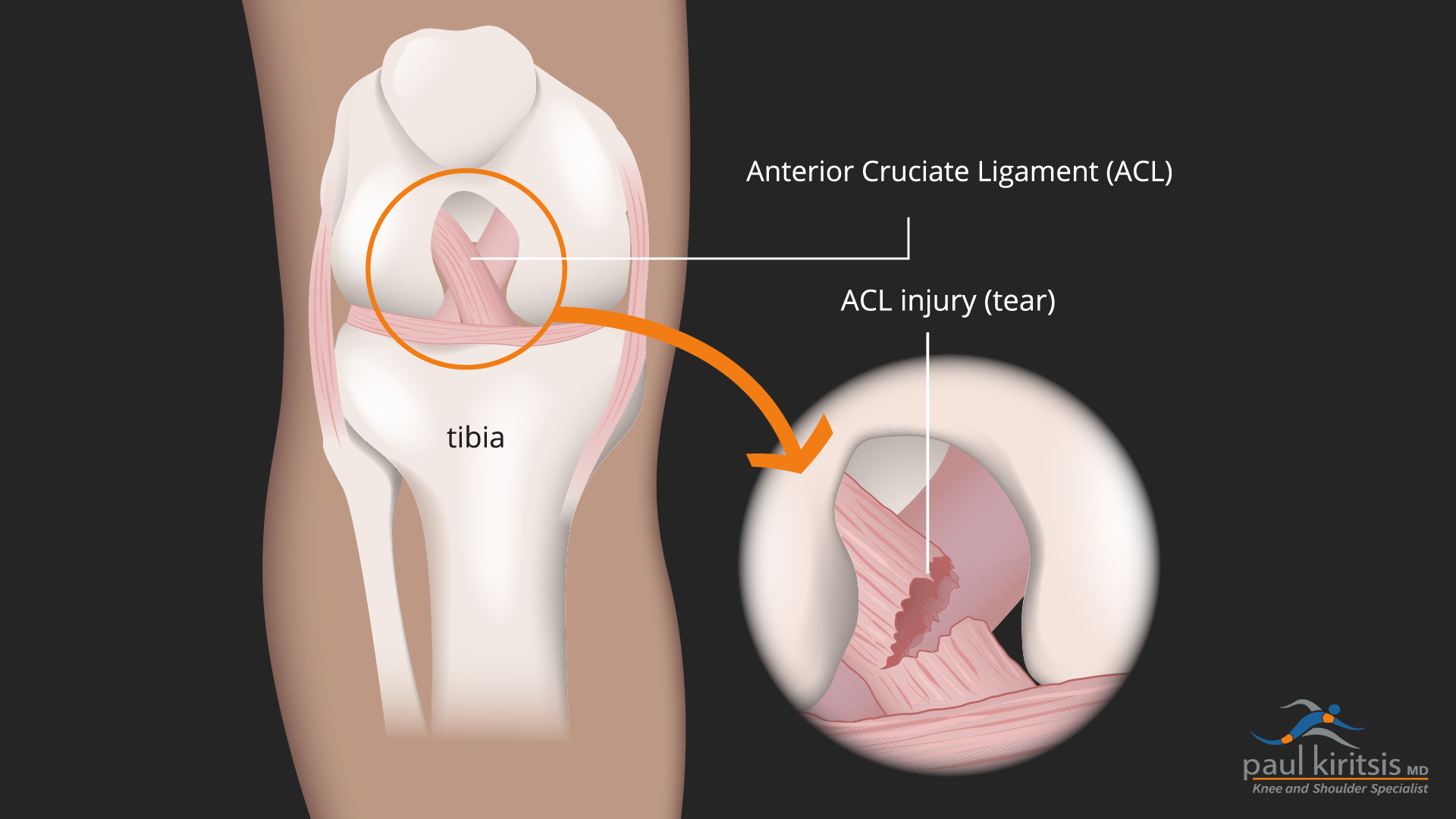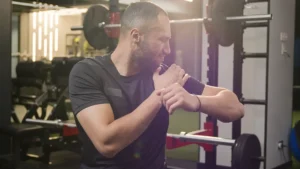Dealing with an ACL injury brings the critical question to the forefront: Can you walk with ACL injury? It’s not a simple ‘yes’ or ‘no’ – walking depends on the injury’s severity and your body’s response.
In this post, we’ll unpack the complexities of ACL injuries, discuss strategies for managing them, and the recovery options that can get you back on your feet. By the end, you’ll understand the journey from injury to recovery, emphasizing realistic expectations and safe practices.
Key Takeaways
- The ability to walk with an ACL injury varies, but activities involving turning or pivoting should be avoided to prevent further damage to the knee.
- ACL injuries range in severity from mild stretching that maintains joint stability to complete tears that result in instability, influencing treatment and recovery options.
- Treatment for ACL injuries involves immediate care like bracing and icing followed by options of non-surgical management or surgical repair, coupled with rehabilitation to restore knee function.
Navigating Life with an ACL Injury
ACL injuries are like uninvited guests; they disrupt your life and force you to adjust your routines. Most ACL tears happen during sports activities that involve sudden stops, changes in direction, or direct contact, such as soccer, basketball, or skiing. If you’re unfortunate enough to have torn your ACL, you might be wondering: can you still walk with a torn ACL?
The walking abilities after an ACL injury can vary widely, depending on the specific situation. While the initial pain and swelling can be quite significant, once these symptoms have subsided, you might find that you can walk in straight lines and even climb stairs, assuming there are no other injuries to the knee. However, it’s important to avoid movements that involve turning, twisting, or pivoting when walking, as these could cause further injury.
Understanding ACL Injuries

Your knee is a complex joint, and the anterior cruciate ligament (ACL) plays a crucial role in its stability. It’s one of the four primary ligaments in the knee joint, including the medial collateral ligament, posterior cruciate ligament, and the lateral collateral ligament, that work together to stabilize the knee and regulate its movements. An ACL tear occurs when the ligament is overstretched, resulting in a partial or complete tear.
ACL injuries are relatively common, especially among athletes, with between 100,000 and 200,000 ACL injuries occurring annually in the United States alone. Factors like generalized joint hypermobility increase the risk of ACL injuries, with females often more susceptible than males.
Symptoms Indicating a Torn ACL
If you’ve torn your ACL, your knee will likely let you know something is amiss. Most people who’ve experienced an ACL injury recall feeling or hearing a pop in their knee at the moment of injury, accompanied by varying degrees of pain or discomfort.
Another common symptom following an ACL injury is the knee ‘giving out,’ or a feeling of instability, particularly when bearing weight on the affected limb. Significant swelling and severe pain often follow the initial injury event, hindering your ability to continue with activities.
The Severity Spectrum of ACL Injuries
Just like other injuries, ACL injuries occur on a spectrum. They can range from mild stretching with preserved joint stability to severe complete tears resulting in joint instability. The severity of an ACL injury directly influences your mobility and the stability of your knee joint.
A Grade 3 ACL injury, for example, refers to a complete tear, where the ligament can no longer stabilize the knee joint. This type of injury may significantly affect your movement and weight-bearing abilities, requiring more intensive treatment and a longer recovery period.
Grading Your ACL Injury
ACL injuries are generally graded on a scale from one to three, with one being the least severe and three being the most severe. A Grade 1 ACL injury, also known as a mild injury, consists of mild damage where the ligament is slightly stretched but still able to stabilize the knee joint.
On the other hand, a Grade 2 ACL injury involves partial tearing of the ligament, which can lead to knee movement issues. The degree of ACL injury severity is evaluated during a clinical examination using tests like the Lachman test to assess the anterior translation of the tibia. The vast majority of ACL injuries have a complete tear of the ligament.
Impact on Movement and Weight Bearing
ACL injuries can significantly impact your knee joint mobility. You might experience issues like your knee locking, often stemming from associated injuries like meniscal damage. A loss of range of motion in the affected knee can hinder your ability to perform normal movements.
You might also find yourself developing altered walking patterns, most notably a quadriceps avoidance gait, to minimize pain and instability during knee extension. This change in walking pattern is your body’s way of protecting the injured area, but it’s not a long-term solution.
Immediate Actions Post-ACL Injury
An ACL injury can leave you in a state of shock. Your mind might race with hundreds of questions, but the priority should be preventing further damage and managing pain. Start by stabilizing and protecting the injured knee using braces or crutches.
Next, apply ice and elevate your leg to reduce swelling. Pain medication can be taken if needed. Once you’ve managed the initial pain and swelling, it’s crucial to consult a healthcare provider to create an appropriate treatment plan.
To Walk or Not to Walk?
One of the most common questions after an ACL injury is whether it’s safe to walk. Walking on a torn ACL immediately after the injury can increase pain and risks further damage to the knee. Therefore, the use of a brace or mobility aids such as crutches or a cane is recommended to support the knee and minimize risk until stability is regained.
Diagnostic Measures for ACL Injuries
To diagnose an ACL injury, healthcare providers conduct physical examination methods alongside assessing your history. This examination is crucial in determining the treatment pathway and further steps in your recovery journey.
Imaging tests such as X-rays, MRI scans, and ultrasound are integral in ruling out bone fractures and assessing damage to:
- ligaments
- tendons
- muscles
- soft tissue in the knee
These diagnostic measures provide a comprehensive view of your ACL injury and guide your healthcare provider in formulating an appropriate treatment plan.
What to Expect During Your Healthcare Provider Visit
During your visit to a orthopedic surgeon, you’ll be asked about your medical history as part of the initial examination for a suspected ACL injury. The surgeon will compare your injured knee with the uninjured one to identify discrepancies and abnormalities.
The physical exam will assess the knee’s:
- Range of motion
- Function
- Swelling
- Tenderness
It may also involve specific tests to determine the severity of the ACL injury. These tests and assessments provide a clearer picture of your injury and lay the foundation for a tailored treatment plan.
Treatment Pathways for ACL Recovery
Treatment options for ACL injuries consist of nonsurgical methods, like bracing and physical therapy, as well as surgical reconstruction to restore stability to the knee. The decision to pursue nonsurgical or surgical treatment is influenced by factors including your age, activity level, injury severity, and personal lifestyle and goals.
Whether you are a candidate for a non-surgical or surgical path, the end goal is the same: to restore your knee’s function and return to your regular activities.
Non-Surgical Management
Non-surgical management strategies are often suitable for mild ACL injuries. During the recovery period, which can extend from 12 to 28 weeks, the aim is to enhance knee strength, balance, and overall range of motion. Therapeutic exercises prescribed for ACL rehabilitation are designed to prevent additional knee injury while promoting muscle strengthening and joint flexibility.
Non-surgical management can involve bracing to provide stability and physical therapy to reinforce the muscles and ligaments around the knee. With appropriate rehabilitative therapy, individuals with mild ACL injuries may be able to resume walking within several weeks under the guidance of healthcare professionals. Unfortunately, bracing has not been shown to significantly reduce the risk of further episodes of instability in an ACL deficient knee.
Surgical Repair and Rehabilitation
For more severe ACL injuries, surgical repair may be necessary. ACL reconstruction surgery uses a graft piece of tissue to rebuild the ACL, which may be necessary for athletes and those with active lifestyles to return to their previous levels of activity. Two common surgical approaches can be Patellar Tendon Graft Reconstruction of the ACL and Hamstring Tendon Graft Reconstruction of the ACL. Hamstring reconstruction’s have been falling out of favor and we now use the quadricep tendon as a second option for the ACL graft.
Starting rehabilitation on the day of ACL surgery is crucial, including exercises in the recovery room and later activities such as riding a stationary bike, to decrease swelling, regain knee motion, and rebuild strength. Post-surgery, a knee brace can be used to limit movement and aid in healing by decreasing pressure on the ligament.
The overall success rate of properly performed ACL surgery, followed by adequate rehabilitation, is high, enabling individuals to return to sports within a typical recovery period of 9 to 12 months.
Preventing Re-injury and Ensuring Full Recovery
ACL injuries can be life-altering, but with the right approach, you can prevent re-injury and ensure full recovery. Maintaining muscle strength around the knee is crucial for stability and safeguarding against future ACL injuries.
Adhering to a consistent training and conditioning regime that includes neuromuscular training focusing on stretching, plyometrics, and balance can significantly lower the chances of an ACL re-injury. Sport-specific exercises and stretches are essential during warm-ups to prevent muscle strains and potential ACL re-injury.
Moreover, enhancing agility through proper movement training, alongside practicing safe landing skills and changes in direction, contributes to a reduced risk of re-injuring the ACL.
From Physical Therapy to Playing Sports
Physical therapy is a critical component of recovery after an ACL injury, aiding in the restoration of knee function and stability. Patients typically transition from standard physical therapy to a more aggressive therapy regimen at approximately the fourth postoperative month. We typically wait nine months for return to athletics and patients must pass functional testing in order to return to athletics.
Adjusting Lifestyle and Activities
Adjusting your lifestyle and activities is an essential part of recovery from an ACL injury. Athletes recovering from ACL injuries should gradually transition from physical therapy to sports, being mindful of their psychological readiness and engaging in sport-specific training.
During this transition, it is critical for athletes to listen to their bodies and adjust activities if experiencing discomfort, knee pain, or fatigue, in order to prevent re-injury. While participating in activities that compress or weight-bear on the knee is not advisable during recovery, focusing on strengthening surrounding muscles can enhance mobility without additional risk to the ACL.
Recovering athletes can also stay involved in sports through alternative roles, or by exploring new interests that do not stress the knee.
Safe Physical Activities During Recovery
It’s crucial to engage in safe physical activities during your ACL injury recovery. Swimming and aquatic therapy are recommended low-impact activities that can help maintain fitness without putting excessive strain on the ACL.
Stationary cycling is often suggested as a safe form of exercise for individuals recovering from an ACL injury, as it allows for knee movement without bearing weight. Isokinetic exercise machines are useful for strength training during ACL recovery as they help to control the speed and resistance of muscle movements. However, when engaging in physical activity during ACL recovery, it is crucial to avoid activities that involve jumping, twisting, or rapid changes in direction to prevent re-injury. Your therapist will continue to advise you during your recovery process regarding appropriate activities.
Summary
Navigating life with an ACL injury can be challenging, but with the right understanding and approach, along with seeing a skilled orthopedic surgeon who specializes in ACL injuries, a full recovery is achievable. From recognizing symptoms and understanding the severity of your injury, to following the recommended treatment pathways and adjusting your lifestyle, every step matters. Consistency is key, and with the right mindset, you can turn this setback into a comeback.
Frequently Asked Questions
Can you fully bend your knee with a torn ACL?
After a torn ACL, it’s very likely that you won’t be able to fully bend your knee and may experience difficulty with your range of motion. This can cause increased pain or discomfort.
Can I walk with a torn ACL?
You can walk with a torn ACL, but it’s important to avoid movements that involve turning, twisting, or pivoting. It’s best to stick to straight lines and avoid climbing stairs if possible.
What are the symptoms of a torn ACL?
The symptoms of a torn ACL can include a popping sound at the time of injury, knee instability, and significant swelling and pain after the injury. These symptoms may indicate a torn ACL.
How are ACL injuries diagnosed?
ACL injuries are diagnosed through physical examinations and MRI scans. Imaging tests help in confirming the diagnosis and assessing the severity of the injury.
What are the treatment options for an ACL injury?
The treatment options for an ACL injury range from nonsurgical methods like bracing and physical therapy to surgical reconstruction in the appropriate patient. Both approaches aim to restore knee function and reduce the risk of further damage.




